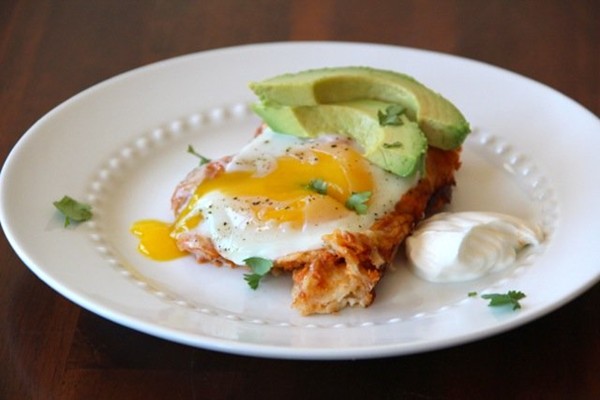Food idiosyncrasies are both personal and cultural
June 22, 2016 by Darcie
There are basically two kinds of eaters in this world: those who eat each item of food separately and those who combine items together with abandon. Amy Fleming of The Guardian explores these disparate personalities in a recent article that explains some of the psychology between the two camps.
Of course there are gray areas, but you likely relate more to one of these categories than the other. Researchers have studied these behaviors, even giving a name to those at the separate eating extreme. Brumotactillophia is the fear of different foods touching one another, and is seen as a holdover from being a fussy eater as a child. Usually we grow out of this stage, but for some people it gets worse as they get older. You might be surprised to learn that Yotam Ottolenghi prefers to keep his foods separate. He admits that, like his small child, he likes each food item on the plate to be apart from the others. “Possibly even served in a sequence and not all together. I love tasting each item and then moving on to the next one,” he says.
Another “militant eating category” involves people who exhibit extreme delayed gratification. These people make it a point to save the very best bite of each food for last, and sometimes even put all of them together for one final burst of flavor and texture. This is in contrast to those who prefer to eat the best first. To exemplify this category, the article describes the habits of Chef Marcus Wareing, who eats foods in order of what he likes best. For a Sunday roast dinner, he will follow this progression: “potatoes, sage-and-onion stuffing, crackling, pork, with the poor old carrots and cauliflower left to the lukewarm end.”
What shapes these and other food idiosyncrasies? According to researchers, cultural influences play a large role. Eating customs vary from region to region, and what is acceptable in one area may be taboo in another, and societal outlooks can also have an effect. For example, studies show that more Americans are delayed gratifiers than ‘eat the best first’ types. Psychologists surmise this is due to the idea of the American dream that working hard will bring a reward later, or to use the researchers terms, “Americans prefer a rising sequence in life.” There doesn’t seem to be as much consensus on what makes someone a stacker versus a separatist, however.
Are you a stacker, or does the thought of foods touching, like in the Huevos rancheros casserole from Alaska From Scratch pictured above, give you the heebie-jeebies? Do you save the best for last or do you eat your favorites first?
Categories
- All Posts (7078)
- Antipasto (2208)
- Author Articles (250)
- Book News (944)
- Cookbook Giveaways (996)
- Cookbook Lovers (262)
- Cooking Tips (116)
- Culinary News (299)
- Food Biz People (558)
- Food Online (800)
- Holidays & Celebrations (277)
- New Cookbooks (154)
- Recipes (1520)
- Shelf Life With Susie (231)
- What's New on EYB (134)
Archives
Latest Comments
- fluffies on For the Love of Lemons by Letitia Clark – Giveaway
- Goulashgirl on Any way you slice it
- ChefClaireFVS on French at Heart – Cookbook Giveaway
- ChefClaireFVS on 20 Amici – 40 Ricette Cookbook Giveaway
- kitchen_chick on Salt Sugar MSG Cookbook Giveaway
- kitchen_chick on Balli Balli – Cookbook Giveaway and Quick Bites
- SCH on Introducing libraries to EYB at ALA
- FrenchCreekBaker on Four outstanding independently published cookbooks worth your attention
- breakthroughc on Any way you slice it
- Marymac54 on French at Heart – Cookbook Giveaway